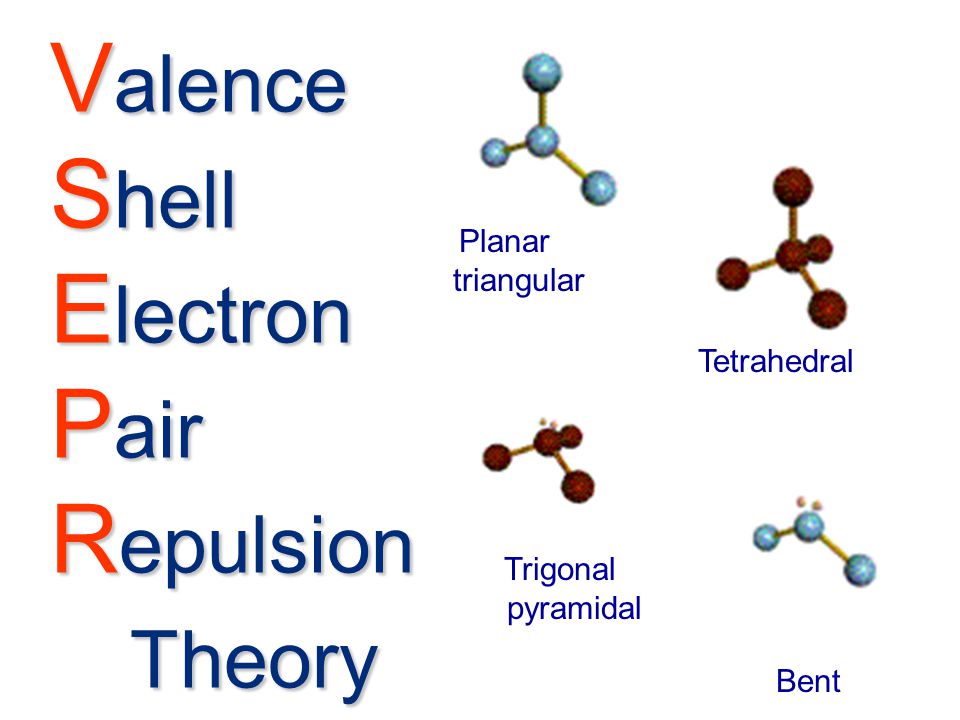VSEPR Theory
 source : Google Sites
source : Google Sites
VSEPR Theory ( Valence Shell Electron Pair Repulsion Theory)-
Sidgwick and Powell proposed a theory based on the repulsive interactions of electron pairs of valence shell.This theory was developed by Nyholm and Gillespie.
The basis of this theory is the shape of molecules can be determined by the number of lone pair and bond pair of electrons in valence shell of central atom.
Postulates of VSEPR Theory (Valence Shell Electron Pair Repulsion Theory)-
1) The geometry of a covalent molecule depends upon the number of bp of electrons and number of lp of electrons .
Hybridisation = no. of lone pair(lp) of electrons + no. of bond pair (bp)of electrons
Ex . CH4
bp =4 , lp =0
Hybridisation = 0 + 4 =4 [sp3 hybridisation]
Geometry tetrahedral and bond angle is 109028′

source : revolvy.com
NH3
bp =3 , lp =1
Hybridisation = 1 + 3 =4 [sp3 hybridisation]
Geometry pyramidal and bond angle is 106045′

2) Electron pairs tend to repel one another because their electron clouds are negatively charged.
3) If all the hybrid orbitals of central atom contain only bond pair of electrons then the molecules will have regular geometry.
4). If hybrid orbitals of central atom contain lone pair and bond pair of electrons then the molecules will have irregular geometry.
Ex.
H2O

source : en.wikipedia.org
SF4

source : keywordsuggest.org
5) The electron pair surrounding the central atom repel each other. This implies that orbitals or electron clouds containing electron pairs repel each other. Therefore they try to stay as far apart as possible to acquire a state of minimum energy and maximum stability.
6) The repulsive interactions between two lone pairs are different from those between two bps or those between a lone pair and bond pair . The repulsive interaction between lone pair and bond pair decreases as –
lp – lp > lp – bp > bp – bp







